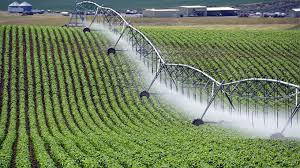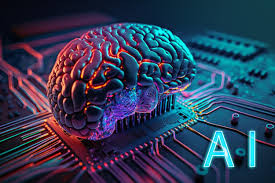
BACK in the 1980s, when I studied Industrial Management, I learned foundational Work Study methods, particularly Time and Motion Studies, as the benchmark for operational efficiency.
These methodologies, rooted in classic industrial engineering, were essential tools used to optimise productivity in factories and workshops.
Now, we are seeing how artificial intelligence (AI) is rapidly transforming these practices in ways we could never have imagined back then.
What is work study?
Work Study is the systematic examination of work methods and the measurement of work content. It encompasses both Method Study and Work Measurement. Pioneers such as Frank and Lillian Gilbreth introduced motion studies to analyse and eliminate wasted movements, while Frederick Winslow Taylor established Time Study as part of scientific management.
For over a century, these techniques have helped organisations set production standards, identify bottlenecks, and eliminate inefficiency.
Classical work study methods
Traditional work study relies on direct observation, stopwatch timing, and predetermined motion time systems such as Methods-Time Measurement (MTM). The approach is highly manual, requiring engineers to record current practices, analyse proposed changes, and set time standards for qualified operators under specific conditions.
- Harvest hay to prevent veldfires: Ema
- Public relations: How artificial intelligence is changing the face of PR
- Queen Lozikeyi singer preaches peace
- Public relations: How artificial intelligence is changing the face of PR
Keep Reading
While this has proven effective for optimisation, it is increasingly challenged by the complexities of modern manufacturing.
Shortcomings
Conventional methods have several limitations: they are static and labour-intensive, as manual observation restricts how many variables can be tracked at once and often misses subtle inefficiencies or interactions.
They also lack adaptability, being slow to reflect changes in product types, worker skills, or operating environments. Additionally, their limited accuracy means that short sample periods may not capture full operational variability, especially in factories producing diverse, customised products.
The role of AI in work study
AI marks a paradigm shift from periodic, manual measurement to continuous, intelligent optimisation.
AI-powered computer vision monitors worker movements with greater accuracy, tracking multiple workers to identify micro-motions, ergonomic risks, and inefficiencies in real time.
These systems maintain accuracy and alertness for extended periods, surpassing human limits, and use deep learning to identify typical patterns and unusual changes.
Machine learning
Machine learning analyses complex work study data and identifies correlations that may not be immediately apparent to human analysts.
AI can simultaneously monitor variables such as ambient temperature, worker experience, and equipment performance.
Predictive analytics forecast bottlenecks and maintenance needs, transforming work study into a forward-looking, proactive process.
It also automates detailed work instructions and updates standard operating procedures based on evolving best practices.
IoT integration, data richness
Modern factories are now saturated with sensors thanks to the Internet of Things (IoT).
These sensors continuously capture data on variables that include temperature, vibration, usage, and equipment health. This enables AI to perform sophisticated analysis, optimise tool allocation, improve ergonomic conditions, and refine maintenance schedules.
Dynamic time standards
The greatest innovation is the emergence of dynamic time standards.
AI no longer relies on periodic measurements; it adjusts expected completion times according to worker skills, equipment status, or material differences, ensuring real-time accuracy. This flexible system instantly recognises and responds when traditional workflows become inefficient due to changing conditions.
Predictive work study capabilities
AI also introduces predictive capabilities to work study. It helps forecast the impact of new products, workforce changes, or equipment upgrades. These insights support strategic planning, identify future skill gaps, and enable companies to simulate and choose optimal organisational strategies before implementation.
Multi-objective
Historically, work study focused on maximising productivity or minimising time. AI brings multi-objective optimisation, balancing productivity, quality, safety, ergonomics, energy use, and worker satisfaction.
Algorithms recommend solutions based on historical trade-offs, suggesting approaches such as slightly slower but safer movements that increase long-term efficiency.
Real-time feedback
AI enhances workplace feedback, using computer vision to instantly detect deviations from optimal technique and provide workers with on-the-spot coaching.
This guidance is increasingly personalised, tailored to individual learning styles and competence levels, accelerating mastery and consistency.
Industry implementation
These advances are visible in leading global firms: Tesla employs AI computer vision to fine-tune work instructions, correlate worker motions with quality outcomes, and continuously optimise assembly processes.
Foxconn’s smart factories use AI to monitor thousands of employees, adjusting environmental factors such as lighting to maintain speed and accuracy. Amazon uses AI in its warehouses to optimise picking routes, allocate tasks, and enhance human-robot collaboration for dynamic improvements in speed and precision.
Changing roles
The rise of AI redefines industrial engineering roles.
Engineers now focus on interpreting and applying AI-driven insights, aligning them with broader business, safety, and ethical objectives. They serve as facilitators of human-AI collaboration, blending analytic rigour with human judgment, creativity, and strategic oversight.
Adoption challenges
Integrating AI-enhanced work study requires high-quality, integrated enterprise data, investment in sensors and networks, effective change management to address resistance, especially concerns about surveillance and job security, and transparent communication to foster trust and clarify AI’s supportive role.
Ethical considerations
Worker privacy and autonomy are paramount. Organisations must maintain transparent policies and involve staff in dialogue about continuous monitoring. Human oversight remains essential, particularly where cultural or contextual nuances may not be fully understood by AI.
Looking ahead
AI’s future in work study includes autonomous optimisation and digital twins, virtual simulations of entire factory operations.
This enables deeper personalisation, knowledge transfer across industries, and algorithmic integration of sustainability and social goals with productivity.
Conclusion
The fusion of AI and work study moves industrial management from static measurement to dynamic, holistic optimisation.
This transformation increases efficiency, quality, and worker well-being.
Successful organisations will balance technological innovation with human values and expertise, leading the future in manufacturing excellence.
Bangure is a filmmaker with a media degree and substantial experience in media production and management. He previously served as the chairperson of the National Employment Council for the Printing, Packaging, and Newspaper Industry. A dedicated enthusiast and scholar of artificial intelligence, Bangure combines his creative and technical skills to delve into innovative advancements. — [email protected].











